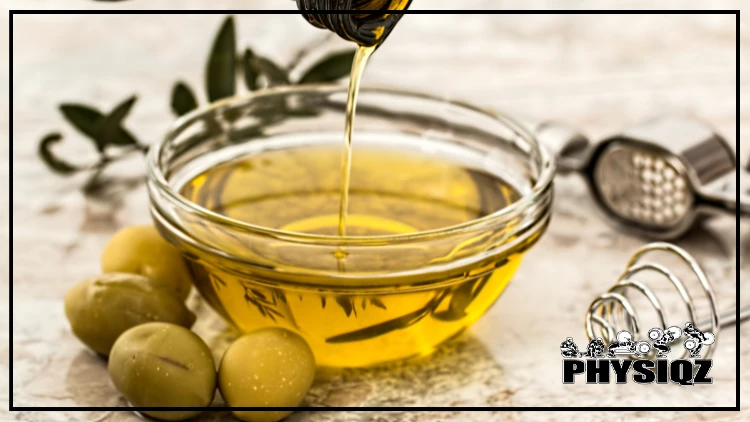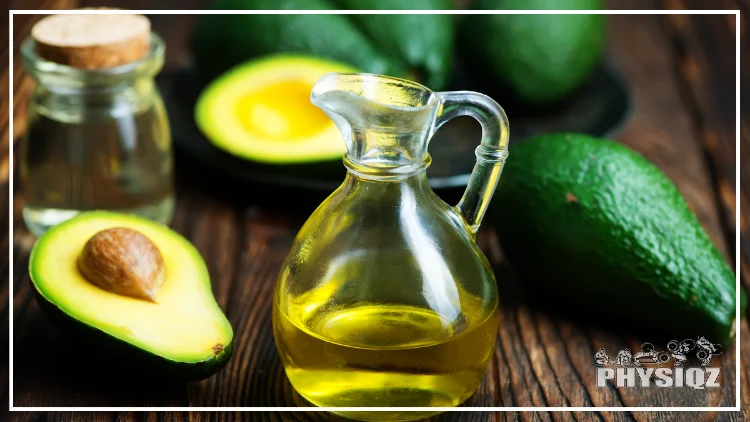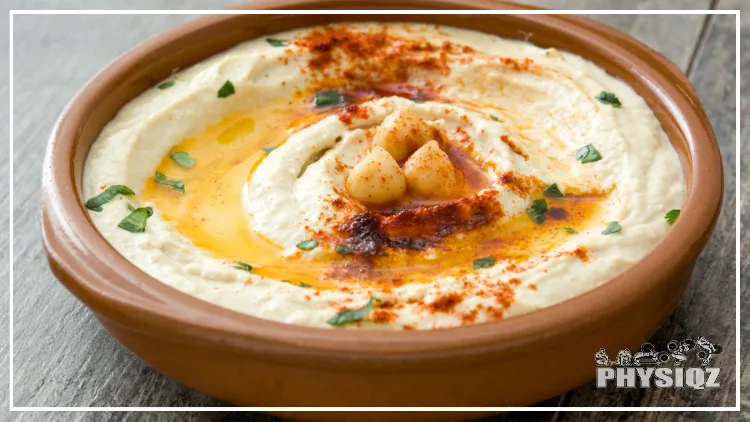
Olive oil is often considered one of the healthiest cooking oils because of its healthy fats, although the keto diet primarily focuses on being low in carbs.1
Luckily, olives make for the best keto oil yet since it’s heart healthy, is low carb, and has all sorts of verities to experiment with.
But with this in mind, it’s important to use the best type of olive oil given the application, understand it’s nutritional value, know what alternate cooking oils can be used without worry of being kicked out of ketosis, and what types of fats make for a healthy oil.
How Many Carbs Are in Olive Oil?
One tablespoon of olive oil has 0 carbs so and is an excellent cooking oil since it’s widely available and there’s different types depending on the application. Additionally, monounsaturated fats are the most present fat in olive oil making it a heart-healthy for high-fat and low-carb natured diets.2
Olive Oil & the Keto Diet: Benefits & Compatibility
When considering keto dieters need to stay under under 50 grams of carbs, one tablespoon of olive oil has 14 grams of fat and 0 carbs so yes, olive is indeed keto friendly.3
When considering if olive oil is keto-approved, it’s clear that it is, and there should be no concern.

Source: stevepb from Pixabay4
While any fat fits into a keto diet, monounsaturated fats are the healthiest type and because olive oil is mainly monounsaturated fats not only is it keto-friendly, it also is a heart-healthy fat that has a lot of health benefits. Truly, olive oil should be a staple in any keto diet!
Different Types of Olive Oil & the Best Type to Use on a Keto Diet
There are five different grades of olive oil so it is important to note the key differences each has and the purpose each should serve.
- Extra Virgin Olive Oil: This is the highest quality of olive oil due to the process it is made. This grade of oil is produced from mechanical or hand pressing and no heat or chemical processes are used which prevent the oil from being alternated from its natural state.5 Due to the high quality and natural state of this oil, it will be the best type to use while on the keto diet. Additionally, the acidity level of extra virgin olive oil is less than 1%. Because of the natural state of the oil, it has the most health benefits.
- Virgin Olive Oil: The production method of virgin olive oil is similar to extra virgin olive oil. The oil is not refined or processed after pressing. The main difference is the natural acidity levels are greater than extra virgin olive oil with a range of 1.5% to 3.3%.
- Refined Olive Oil: Refined olive oil is treated with various processes which do alter the natural state of the oil leaving a tasteless, odorless, and sometimes even colorless oil. This oil could be an option in cooking when looking for a neutral taste but it is lacking the health benefits that come with unrefined olive oil.
- Pure Olive Oil: This is a popular cooking oil because of its higher smoke point and less flavor than other grades of olive oil. Pure olive oil is created by mixing extra virgin or virgin olive oil with refined oil. This oil can also be used for body massages.
- Olive Pomace Oil: This is the lowest quality olive oil available on the market. Once the olives are pressed there is remaining residue of oil and water. The remaining oil is extracted and mixed with high-quality oils in an attempt to improve the quality. While this oil is not a great option for cooking or eating, it is suited for massages.
For those wondering about olive oil’s compatibility with the keto diet, it generally is suitable, but the specific type should be chosen based on its intended use.
Nutrition Information & Health Benefits of Olive Oil
The keto diet demands high-fat foods, leading some dieters to choose unhealthy saturated fats like cheese, butter, or heavily processed meats, which is a concern distinct from whether olive oil fits into a keto diet. While these do technically fit into the keto diet fat requirements consuming saturated fats in excess could lead to health problems including heart disease risk, high cholesterol, and weight gain.6
When starting the keto diet and considering potential weight loss, it’s important to choose healthier unsaturated fats to nourish the body and gain various health benefits, such as improved cholesterol levels and reduced inflammation.7
Olive oil is a monounsaturated fat that boasts a variety of health benefits. Keep in mind, it is best to consume extra virgin olive oil to reap as many health benefits as possible. Olive oil has been associated with a reduced risk of cardiovascular mortality, cardiovascular risks, and stroke.8
Furthermore, while additional studies are required, research has shown the beneficial effects of consuming olive oil on women’s health including breast cancer, ovarian cancer, type 2 diabetes, postmenopausal osteoporosis, and other disorders.9
Olive oil is cholesterol, gluten, sodium, and sugar-free. A tablespoon of olive oil contains:
- 119 calories
- 14 grams of fat (specifically 1.9 grams of saturated fat, 1.4 grams of polyunsaturated fats, and 9.8 grams of monounsaturated fats)
- 0 carbohydrates
In addition to being keto, olive oil has many health benefits making it a healthy fat that is easy to add to keto dishes. More recipes and ways to use olive oil are found below!
Keto-Friendly Olive Oil Alternatives
While olive oil is a great keto-friendly option (and truly makes the best keto oil yet), the dieter may want a variety of oil alternatives that are both healthy and fit into the keto eating plan.
Coconut and avocado oil are two great options that come with different tastes, uses, and benefits.
Coconut Oil
Coconut oil is keto-approved and has become a popular option for those on a keto diet. A key difference between olive oil and coconut oil is the type of fat. While olive oil is almost entirely composed of unsaturated fats, a majority of the fat found in coconut oil is saturated fat.
Which could increase cholesterol levels and lead to a risk of heart disease. Coconut oil does contain medium-chain triglycerides (MCTs) and lauric acid. These could potentially provide some fat-burning and heart-protective benefits.10
Similar to olive oil, there are a few different grades of coconut oil. Cold-pressed, unrefined virgin coconut oil is the most natural and could be a great option for cosmetic uses, such as skin and hair care. It can be used for cooking and baking but it does have a strong coconut flavor and scent one would need to remain mindful of.
A better cooking option may be refined coconut oil. It undergoes additional processing and in effect has a higher smoke point, is flavorless, and odorless. Because of the processing refined coconut oil goes through, unrefined coconut oil would be better to use for skin and hair care and for certain dietary preferences.
One tablespoon of coconut oil contains 9.6 grams of saturated fat whereas olive oil contains 2 grams of saturated fat. The American Heart Association recommends 13 grams per day of saturated fats so coconut oil does come close to that recommended limit.
Avocado Oil
Avocado oil has a mild and nutty taste and can be used in cooking as well as in dressings and dips. Similar to olive oil, it is a heart-healthy oil as it has high levels of monounsaturated fats and promotes better cholesterol.

Source: Yana Gayvoronskaya via Canva.com11
Avocado oil also has zero carbs and because it is high in healthy fats is a great keto-approved option. It is worth noting that avocado oil is typically more expensive, so due to the comparable qualities of olive oil, olive oil may be a better, cost-effective option.
Keto-Friendly Recipes Using Olive Oil
Although it’s confirmed that olive oil is compatible with a keto diet, one might look for new keto-friendly recipes that incorporate olive oil to take advantage of its healthy fats.
These recipes are quick and easy to make and can be a great way to contribute to one’s healthy fat intake while following the keto diet. While enjoying these recipes, keep in mind that intuitive eating promotes weight loss, so savor each bite mindfully.
Keto Olive Oil Chocolate Mousse
For a sweet keto-approved treat try this homemade, keto-friendly chocolate mousse. In this recipe, the olive oil replaces the typical cream making this dish dairy free and just as rich and creamy.
Ingredients:
- 4 large pasteurized eggs (yolks and egg whites separated)
- 1.5 bars of chocolate of choice (about 5oz)
- ⅓ cup of olive oil (while extra virgin will provide the most health benefits it does have a stronger flavor so using a mild flavor such as virgin olive oil could be best here)
- 3 tablespoons of swerve granulated sweetener (or other sweetener of choice)
- 1.5 teaspoon vanilla extract
Instructions:
- Melt the chocolate slowly over a double boiler or in the microwave. If using the microwave, heat in 30-second increments and stir every 30 seconds, and only heat until the chocolate is fully melted (be careful to not overheat which will burn the chocolate and make it become stiff).
- Slowly mix in the olive oil. Be sure to whisk until the oil and chocolate are combined. Once mixed set aside to cool.
- Put egg yolks in a mixing bowl and beat until creamy.
- In a separate mixing bowl, add the egg whites. Whisk the egg whites until soft peaks form then add the vanilla and sweetener to the mixture.
- Fold the chocolate mixture (that should be fully cooled now) into the egg yolk mix. Then fold that mixture into the egg whites mixture.
- Enjoy immediately! For a thicker texture, place in the fridge for 2 hours.
Keto-Friendly Hummus
Typically, hummus would not be allowed on a keto diet because the main component is chickpeas and while high in protein it also is high carb, deeming it not keto-friendly.

Source: etorres69 via Canva.com12
This keto-approved hummus is low carb and only has about 2 grams per serving and is made from olive oil, garlic, and cauliflower making it a great, tasty keto-friendly option.
Ingredients:
- 1 large cauliflower head (cut into small pieces)
- ¼ cup olive oil
- ¼ cup of tahini
- Juice of 1 lemon
- 2 cloves minced garlic
- ½ teaspoon salt
- ½ teaspoon cumin
- ½ teaspoon smoked paprika
- ¼ cup of water (more or less may be needed)
Instructions:
- Preheat the oven to 425°F.
- Spread the pieces of cauliflower evenly on a baking sheet and bake for 15-20 minutes or until tender.
- In a high-speed blender or food processor, combine the cauliflower, tahini, garlic, lemon juice, seasonings, and olive oil. Slowly add the water until you reach the desired consistency. For a smoother hummus add extra water. Blend until smooth.
- Enjoy immediately!
How To be Heart-Healthy & Choose Healthy Fats While Dieting on Keto
While fats are an essential component of a keto diet, it is important to remain mindful of what type of fat the dieter consumes and how that could impact the heart and overall health.
There are four different types of fat:
- Monounsaturated fats (ex: olive oil, avocado oil, peanut butter)
- Polyunsaturated fats (ex: sunflower oil, walnuts, oily fish)
- Saturated fats (ex: butter, bacon, cheese)
- Trans fats (ex: fried foods, frozen pizza)
Monounsaturated and polyunsaturated fats are considered healthy fats and can help maintain healthy cholesterol levels. Whereas saturated and trans fats are unhealthy fats and can raise bad cholesterol which increases the risk of having a heart attack and stroke.
While tracking macros and foods when on the keto diet (if you’re looking for a great food logging resource check out Lose It vs MyFitnessPal) each different type of fat would count under the total fat content but to remain heart-healthy conscious, the dieter should ensure they are including a breadth of healthy options.
One should remember that olive oil is an excellent choice for keto diets as it can be used in recipes and for cooking, offering a versatile way to add healthy fats to a meal plan.
Frequently Asked Questions
How Much Olive Oil Can I Eat While Following Keto?
One tablespoon of olive oil doesn’t contain any carbs and has 9.9 grams of healthy monounsaturated fats so it is a great keto-friendly option. But it is important to remember that for a small portion it is relatively high in calories so limiting to a small portion size of 2 tablespoons daily would be ideal.
Why Is Olive Oil the Best Keto-Approved Oil?
Not only is olive oil an easy option to cook with and add to recipes, but it also comes with a wide range of health benefits. While there are other keto-approved oils, olive oil has a mild taste and can be used for a variety of things, is full of healthy fats, and is cost-effective.
How Can I Lose Weight While Eating Fats?
All fats are not created equally. If you include a healthy amount of polyunsaturated and monounsaturated fats in your diet they will not promote weight gain and instead help your metabolism, reduce spikes in your blood sugar level, and control your appetite to help prevent overeating.
References
1Syda Productions. “Happy Couple Buying Olive Oil.” Canva. Accessed 12 April 2023. <https://www.canva.com/photos/MACLhAxXB78-happy-couple-buying-olive-oil/>
2Masood, W., Annamaraju, P., & Uppaluri, K. R. (2022). Ketogenic Diet. StatPearls [Internet]. <https://www.ncbi.nlm.nih.gov/books/NBK499830/>
3Harvard T.H. Chan. (2022). Diet Review: Ketogenic Diet for Weight Loss. The Nutrition Source. <https://www.hsph.harvard.edu/nutritionsource/healthy-weight/diet-reviews/ketogenic-diet/>
4stevepb. “Olive Oil in a Bowl.” Canva. Accessed 12 April 2023. <https://www.canva.com/photos/MADQ5tHtGmQ-olive-oil-in-a-bowl/>
5Jimenez-Lopez, C., Carpena, M., Lourenco-Lopes, C., Gallardo-Gomez, M., Lorenzo, J. M., Barba, F. J., Prieto, M. A., & Simal-Gandara, J. (2020). Bioactive Compounds and Quality of Extra Virgin Olive Oil. National Library of Medicine, 9(8), 1014. <https://www.ncbi.nlm.nih.gov/pmc/articles/PMC7466243/>
6National Library of Medicine. (2022). Facts about saturated fats. Medline Plus. <https://medlineplus.gov/ency/patientinstructions/000838.htm>
7Harvard T.H. Chan. (2022). Types of Fat. The Nutrition Source. <https://www.hsph.harvard.edu/nutritionsource/what-should-you-eat/fats-and-cholesterol/types-of-fat/>
8Schwingshackl, L., & Hoffmann, G. (2014). Monounsaturated fatty acids, olive oil and health status: a systematic review and meta-analysis of cohort studies. Lipids in Health and Disease, 13(154). <https://pubmed.ncbi.nlm.nih.gov/25274026/>
9Ly, T. T. G., Yun, J., Lee, D.-H., Chung, J.-S., & Kwon, S.-M. (2021). Protective Effects and Benefits of Olive Oil and Its Extracts on Women’s Health. National Library of Medicine, 13(12), 4279. <https://www.ncbi.nlm.nih.gov/pmc/articles/PMC8705829/>
10McCarty, M. F., & DiNicolantonio, J. J. (2016). Lauric acid-rich medium-chain triglycerides can substitute for other oils in cooking applications and may have limited pathogenicity. Open Heart, 3(2). <https://pubmed.ncbi.nlm.nih.gov/27547436/>
11Yana Gayvoronskaya. “Avocado Oil.” Canva. Accessed 12 April 2023. <https://www.canva.com/photos/MACtcBgk4SU-avocado-oil/>
12etorres69. “Chickpea hummus.” Canva. Accessed 12 April 2023. <https://www.canva.com/photos/MADKV_pVikk-chickpea-hummus/>